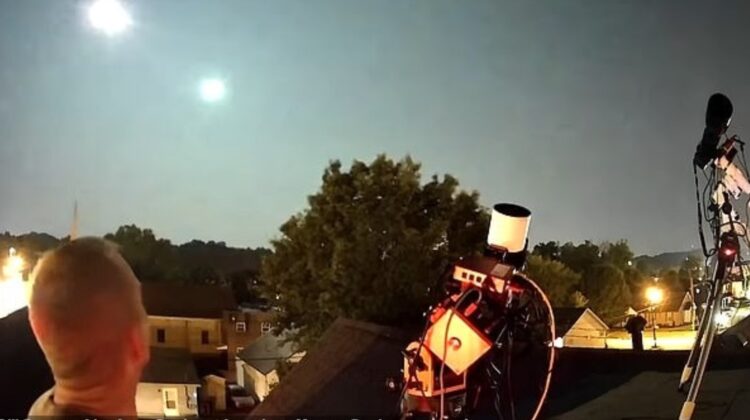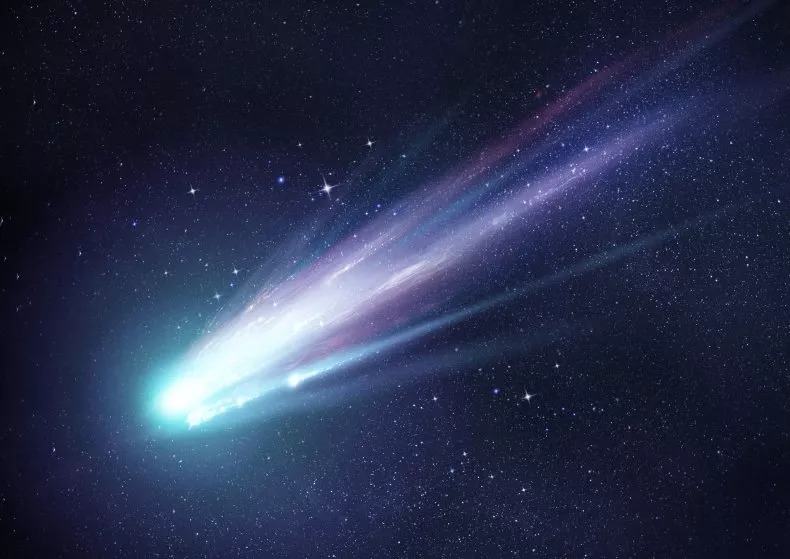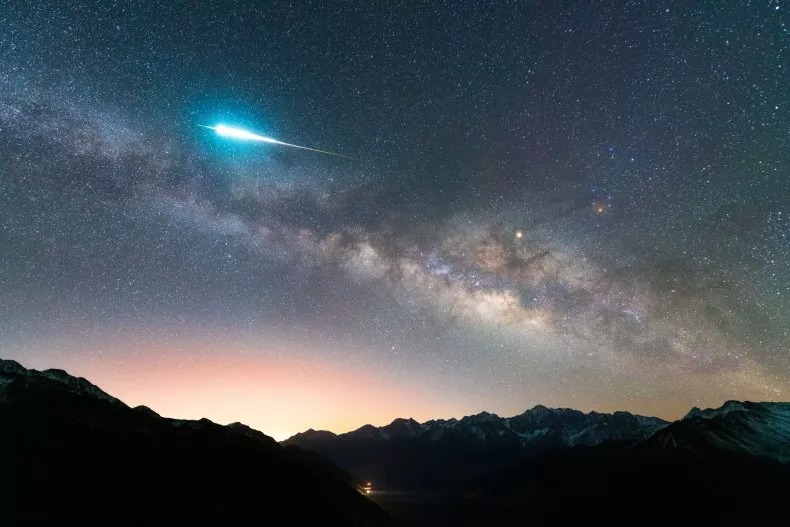
On a fateful night, August 2, a spectacular and enigmatic fireball illuminated the skies above West Virginia, captivating eyewitnesses across the eastern United States. The awe-inspiring explosion, briefly outshining even the supermoon, left observers mystified and curious about its origin. Now, NASA scientists have cracked the case, revealing the stunning story behind this celestial phenomenon.
The extraordinary event was captured on camera by Bill Stewart, an amateur astronomer based in Ceredo, who just happened to be recording at the right moment. His footage caught the fireball’s grand entrance, leaving a trail of light in its wake, followed by a series of distinct fragments gracefully descending toward the horizon. The breathtaking display was not only visually captivating but also audible, as two booms reverberated through the night.
NASA’s Meteoroid Environment Office took the reins in unraveling the mystery. Dr. Bill Cooke, an expert at the office, shared his insight on the fireball’s origins. According to NASA’s analysis, the fireball was likely caused by a large comet fragment, weighing approximately 75 pounds, entering Earth’s atmosphere. This celestial traveler made its grand entrance about 50 miles above the quaint town of Krypton, Kentucky, hurtling southeast at a staggering speed of 37,000 miles per hour.
Over a journey of 65 miles through the atmosphere, the comet fragment gracefully disintegrated, creating a luminous display that was five times brighter than the full moon at its peak. The energy released during the fireball’s breakup was estimated to be equivalent to roughly 2 tons of TNT, a force that caused audible booms and shakings in the region.

Fireballs, also known as bolides, are a result of larger-than-average meteors plummeting towards Earth. The intense friction with the atmosphere causes them to burn up rapidly, creating a magnificent spectacle that leaves observers in awe. In this case, the fireball meteor was likely a fragment from an asteroid, based on its velocity, fragmentation characteristics, and sonic effects, as explained by Mike Hankey, an amateur astronomer and operations manager for the American Meteor Society.
Intriguingly, the possibility of meteorites surviving the fiery descent and now lying amidst the woods near the eastern border of Kentucky and Tennessee adds to the allure of this cosmic event.

More than 70 eyewitnesses reported their sightings of the fireball to the American Meteor Society, stretching from Ohio to Georgia. Their testimonies painted a vivid picture of the awe-inspiring sight that graced the night sky. From bright flashes to an elegant green ball transforming into a bright golden spectacle before dissipating, the observers’ descriptions captured the essence of this rare celestial display.
While the comet’s specific origin remains a mystery, it is speculated that the fragment may have emerged from the inner solar system’s debris field. This region is teeming with remnants of asteroids and comets, creating a vast and captivating cosmic tapestry.

In a world filled with wonder and mystery, celestial events like the West Virginia fireball remind us of the vastness and beauty of the universe. NASA’s investigation and the dedication of amateur astronomers have brought us closer to understanding the dance of celestial bodies above, sparking curiosity and inspiring a sense of awe for the wonders of our cosmos. As we continue to explore the mysteries of the universe, may we cherish these fleeting moments of connection with the cosmic ballet that unfolds overhead.

Leave a Reply